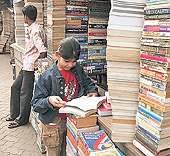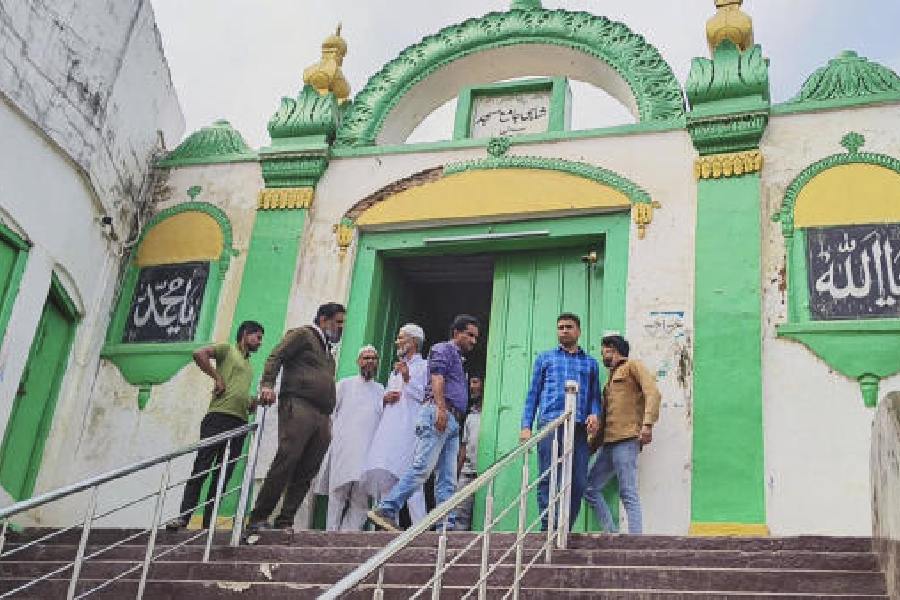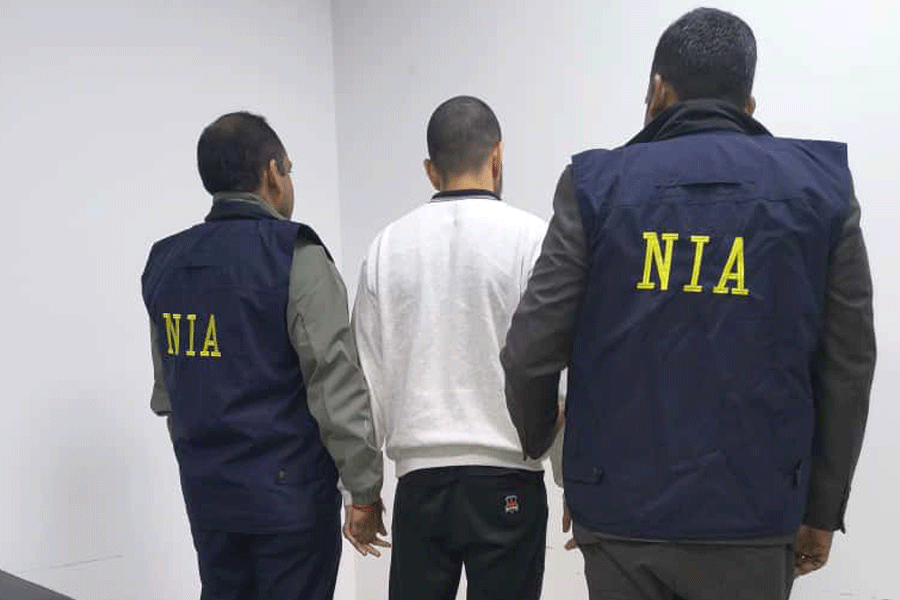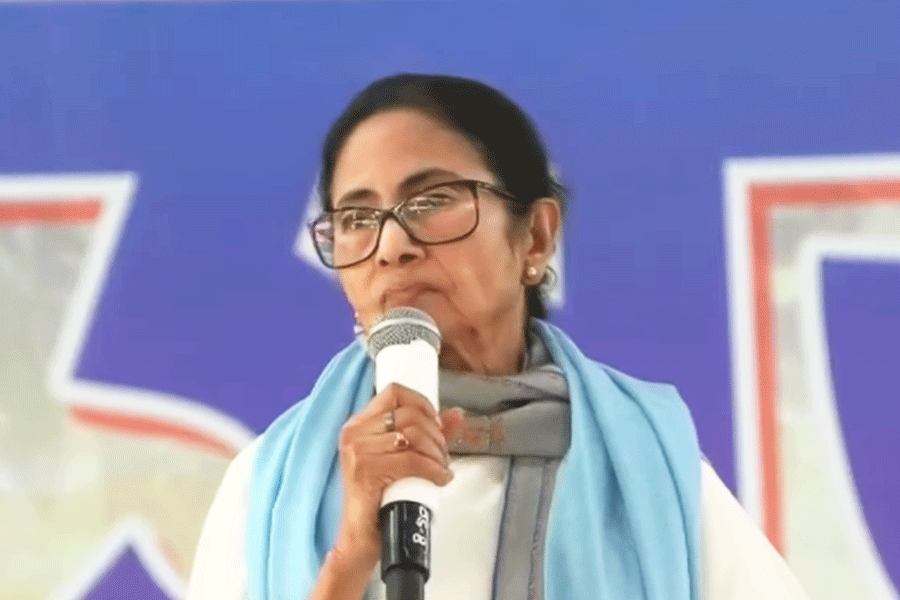 |
| Books pile up on College Street while titles get a stylish display at Charchapad (below). Pictures by Pradip Sanyal |
 |
The narrow bylanes branching off College Street are chock-a-block with small, dingy publishing offices stacked with books, rickety typewriters, obsolete desktops and reams of paper. Amid them, in Radhanath Mullick Lane, stands a neat, glass- enclosed shop with brand new wooden shelves stacked with interesting titles. Called Charchapad (a play on Charjapad, the oldest Bengali literary fragments), this small publishing unit is just about six months old. And has a fairly strong frontlist going.
Like Charchapad, Gangchil, which started in 2001, has a mixed bag of titles in well laid out, sleekly designed books. Bengali publishing has always been known for highbrow content but lowbrow production: cheap paper, grainy pictures, overflowing ink and loose binding. But things look different now.
After retiring as a journalist, Raghab Bandopadhyay of Charchapad decided to start his own publishing house. “I thought if there was space for so many Bengali newspapers there must be space for Bengali books, too.” And so he started out on July 2, 2008.
Raghab mixes fiction and nonfiction. Unnayan Bitarka, a mutli-disciplinary title edited by Bandopadhyay and three others, has contributions from Partha Chattopadhyay, Ashish Nandy, Amit Bhaduri and other well-known scholars. Charchapad’s first fiction title, Sateek Jadunagar, again by Bandopadhyay, is a trilogy. “I am trying to do different things.”
For the Book Fair, he has a slew of nonfiction titles like the memoirs of Jogendra Kumar Chattopadhyay of the late 19th century, a revived edition of Mudir Dokan by Ritendranath Thakur, a collection of essays by Kamal Kumar Majumdar and Amitranjan Basu’s Bhuinphonder Monobidya Charcha.
A similar endeavour is Adhir Biswas’s Gangchil. During the 2002 Calcutta Book Fair, Biswas had simply walked into the fairground with several of his titles in a bag. “I visited some stalls and asked them to keep a few. They very kindly agreed. I sat on the ground and spread the rest around me. All the books that I carried to the fair that day sold out. And within 10 days of the fair, I had sales worth Rs 19,000,” recounts Adhir.
“I started off with children’s books,” says Biswas. So started Doel with Abanindranath Tagore’s unpublished stories, illustrated by Debabrata Ghosh. He also got artist Ramananda Bandopadhyay to illustrate Abanindranath Tagore’s Hanabadir Karkhana. Later he started Gangchil, for serious adult readers. With 40 titles, Biswas feels his production values have made the difference. Most of his books have been designed by renowned artists. Shirshendu Mukhopadhyay’s Lal Tape has been designed by Shuvaprasanna.
But how do Bandopadhyay and Biswas manage to survive in the cut-throat competition of Bengali publishing, where books are priced dirt cheap and a market that is as sensitive to price as the Sensex is to the economy?
“I intend to do seven to eight titles a year (of which he has yet to do five). My books are about 450 pages, priced around Rs 350. I do a print run of 500,” says Bandopadhyay.
The bane of independent publishers is distribution. “I have the traditional College Street network,” he says. This is echoed by Biswas. In addition, there is the new crop of bookstore chains of Landmark, Crossword, Starmark that have also begun to stock Bengali titles.
“The face of retailing Bengali books has changed. Books are now being produced faster and more easily,” said Subhadra De of Chhatim Books, who started her niche publishing house in 2004.
For small houses doing nonfiction, institutional buyers are vital for survival. “The Rammohan Foundation Library gets a central grant and buys books for the libraries. The district fairs, too, contribute to the sales,” says De.
Not everyone subscribes to the success story. Mandira Sen of Stree has reservations: “It is hard to sell Bengali books.” She doesn’t find it cost-effective. “Printing only 350 to 400 copies and selling them for not more than Rs 200 each does not leave a decent profit margin.” Her titles like Sambuddha Chakrabarty’s Antare Andare, Unish Shatake Bangali Bhadramahila or Shahin Akhtar and Moushumi Bhowmick’s Zenana Mehfil didn’t yield the volume of sales that would give her the impetus to carry on with more Bengali titles.










